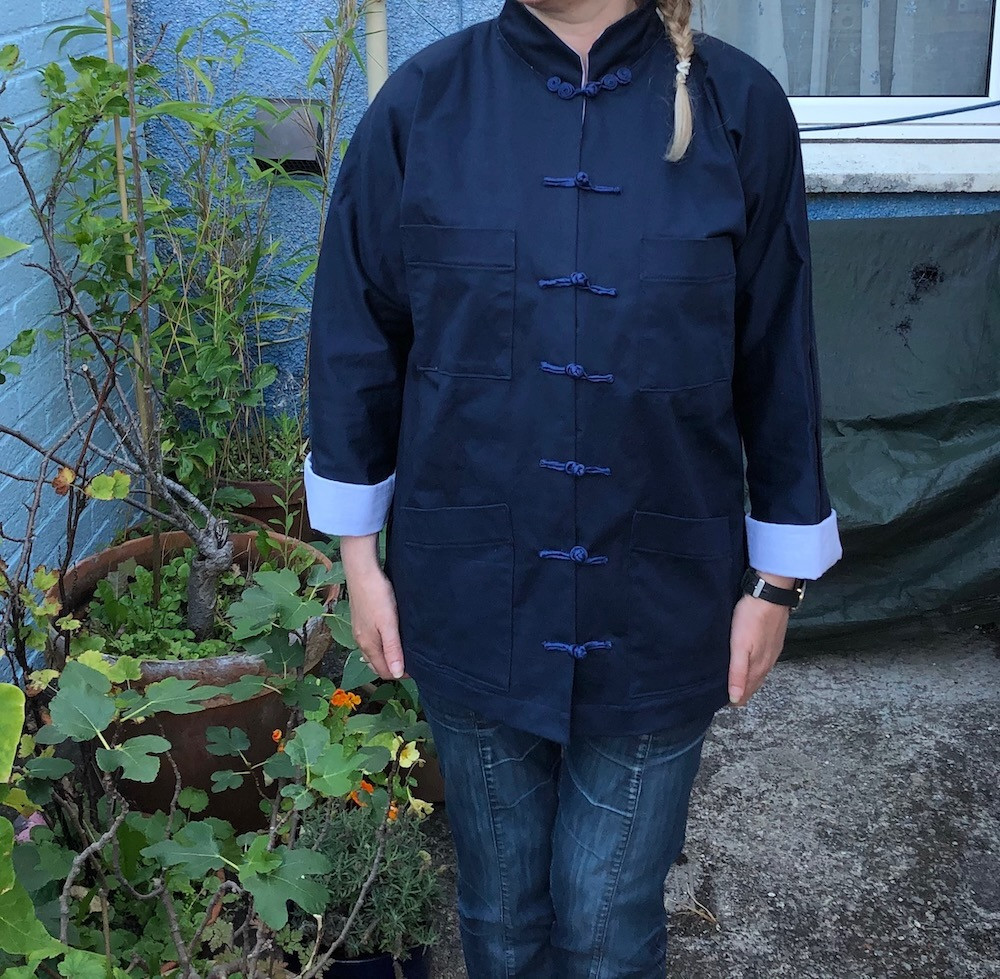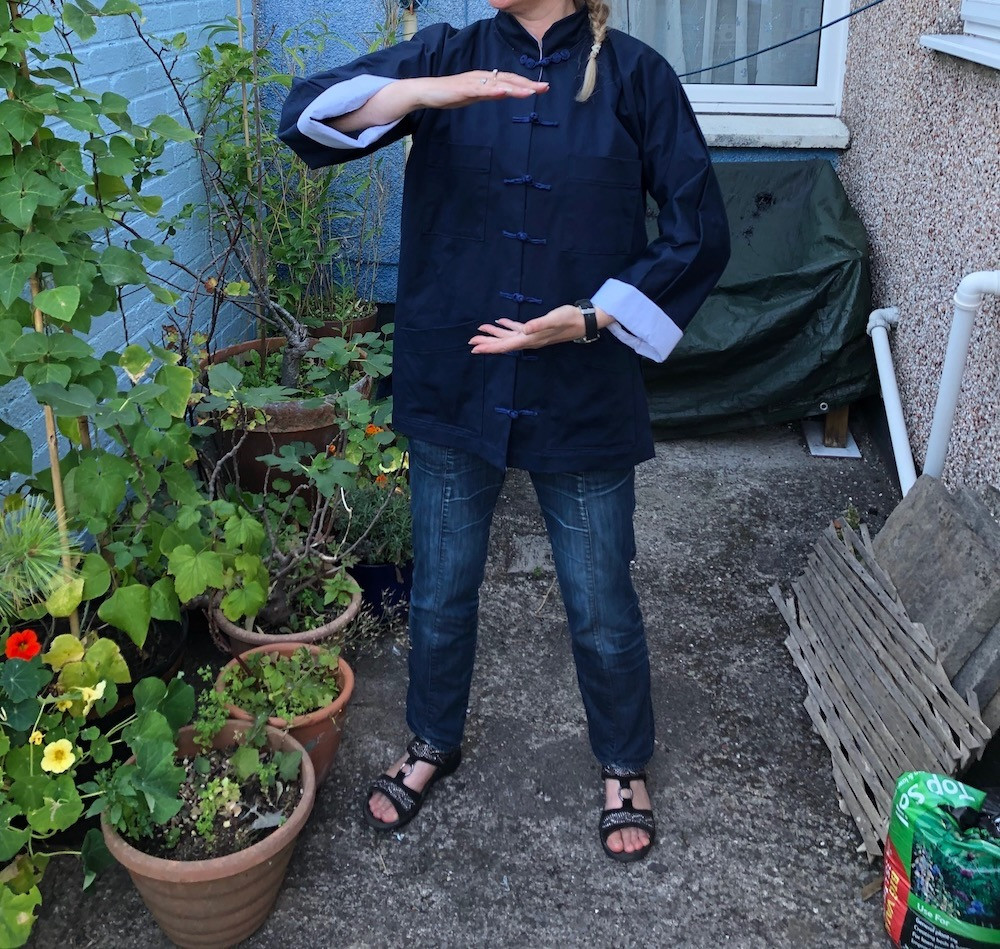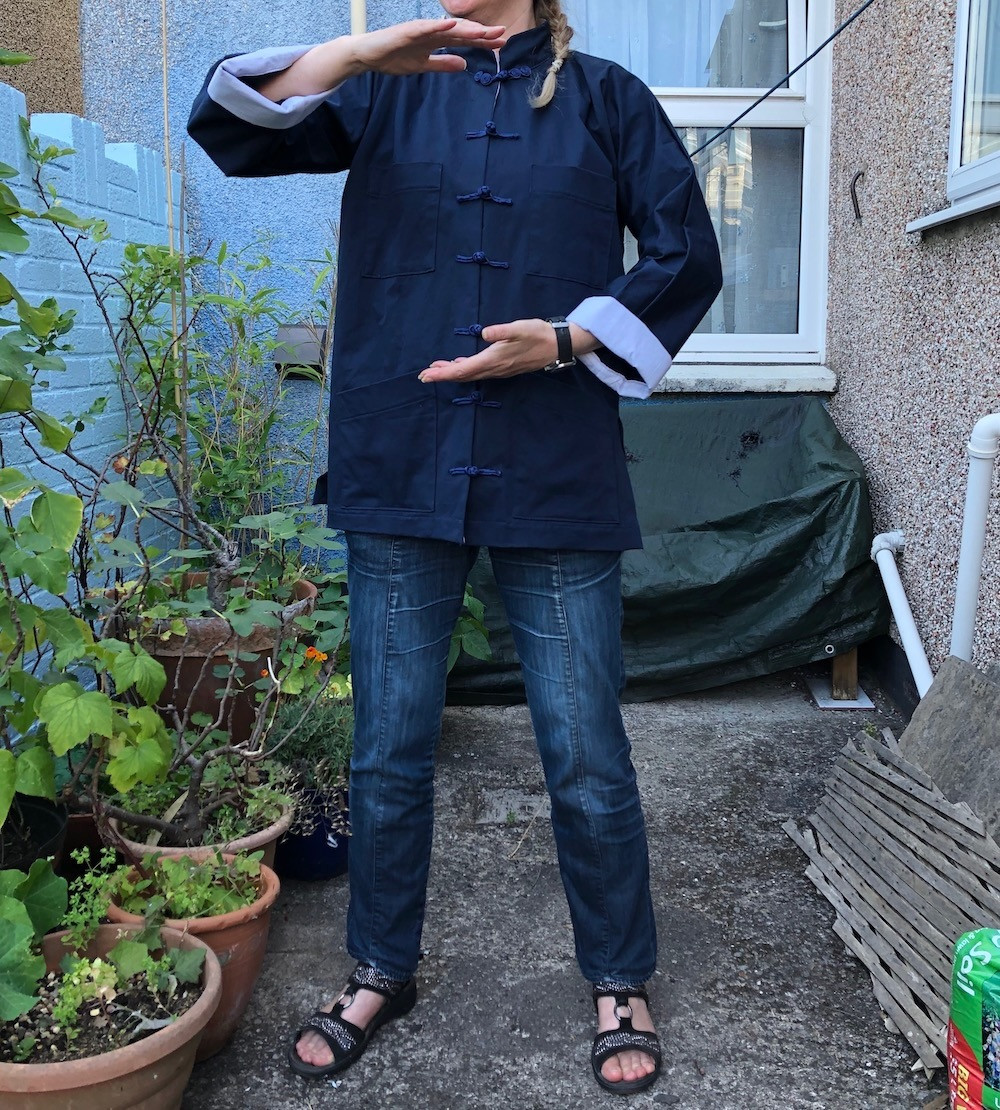In this post, I’m sharing the final steps in creating my self-drafted Tai Chi Uniform jacket. This is part of an ongoing series documenting the journey of making this garment. You can catch up on the previous stages here:
First thoughts on designing the pattern
Selecting the fabric
Cutting out and first sewing steps
It’s all coming together
Since the last update, I’ve focused on completing key elements of the tai chi jacket: the collar, the sleeves with their contrasting cuffs, and the jacket hem, including mitred corners. These stages were thankfully quite straightforward as I had already planned out the approach for each. However, the collar did require a little rework. To minimize the visibility of some slightly uneven stitching, I switched to a white bobbin thread. While it’s not perfectly flawless, I’m now quite satisfied with how the collar looks. I even added a special touch – a Kylie and the Machine “Ta Da” label – to celebrate this milestone.

Alt text: Finished Tai Chi jacket in dark fabric with frog closures, shown open, highlighting the handmade collar detail.
The most time-consuming part over the past month has been crafting the Chinese ball buttons and their corresponding buttonholes, which together form the traditional frog closures. Replicating the elaborate top button and buttonhole, finished with decorative spirals, was particularly intricate. I found creating these tai chi uniform fastenings quite challenging and started to question whether my chosen materials were ideal for such delicate work. The online video tutorial I followed, although visually clear, was in Chinese, leaving me unsure about the specific materials used. I opted for shiny polyester bias binding, but perhaps silk bias binding would have been a better choice? Sourcing silk bias binding easily is another question altogether. The video also mentioned using “starch” to stiffen and neaten the frayed edges. I purchased a starch spray that seemed similar online, but again, I couldn’t confirm if it was a suitable substitute for what was shown in the tutorial. Adding to the uniqueness, the buttons turned out to be a slightly different navy blue than the jacket fabric. I’m choosing to see this as a deliberate design element, a subtle contrast. It is noticeable in the photos, but I anticipate it will become less apparent over time.

Alt text: Buttoned-up view of the completed Tai Chi uniform jacket showcasing the handmade Chinese ball buttons and frog closures in contrasting navy.
This Tuesday marked the tai chi jacket’s debut at my Tai Chi class, and the response was overwhelmingly positive. Everyone offered compliments, which I gratefully accepted. However, it made me ponder the common phrase, “you wouldn’t know it was home-made.” Essentially, all sewn garments are “hand-made,” whether produced at home or commercially. The fabrics, tools, and sewing methods are not drastically different. So, why is there an expectation that a homemade item shouldn’t resemble something purchased from a store?

Alt text: Action shot of the Tai Chi uniform jacket being worn in a Tai Chi pose, demonstrating the garment’s suitability for movement.
I was particularly pleased with the fit of the tai chi clothing. Changing the sleeve design to extend horizontally rather than at an angle was definitely the right decision. I discussed this design adjustment in a previous post. One minor observation is that the jacket makes a slight rustling sound when I move, which made me feel a little self-conscious. Though, I suspect no one else even noticed!

Alt text: Close-up of the finished Tai Chi jacket, highlighting ease of movement and professional appearance, ideal for Tai Chi practice.
Currently, I’m still in the phase of noticing all the minor “flaws” in this tai chi uniform jacket. However, I’m confident that I’ll truly appreciate wearing it during the colder months. Our Tai Chi teacher is a proponent of fresh air, and with ongoing health considerations, I anticipate that even in January, the doors and windows of our practice hall will be wide open!


